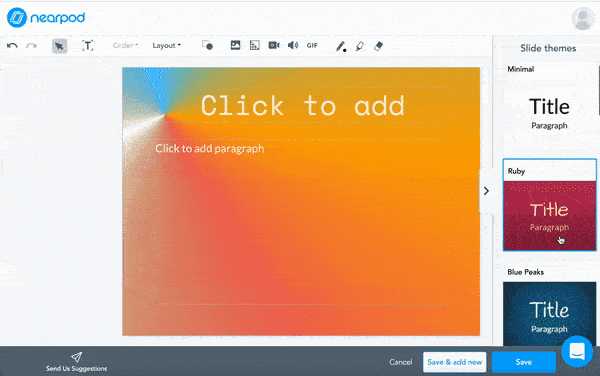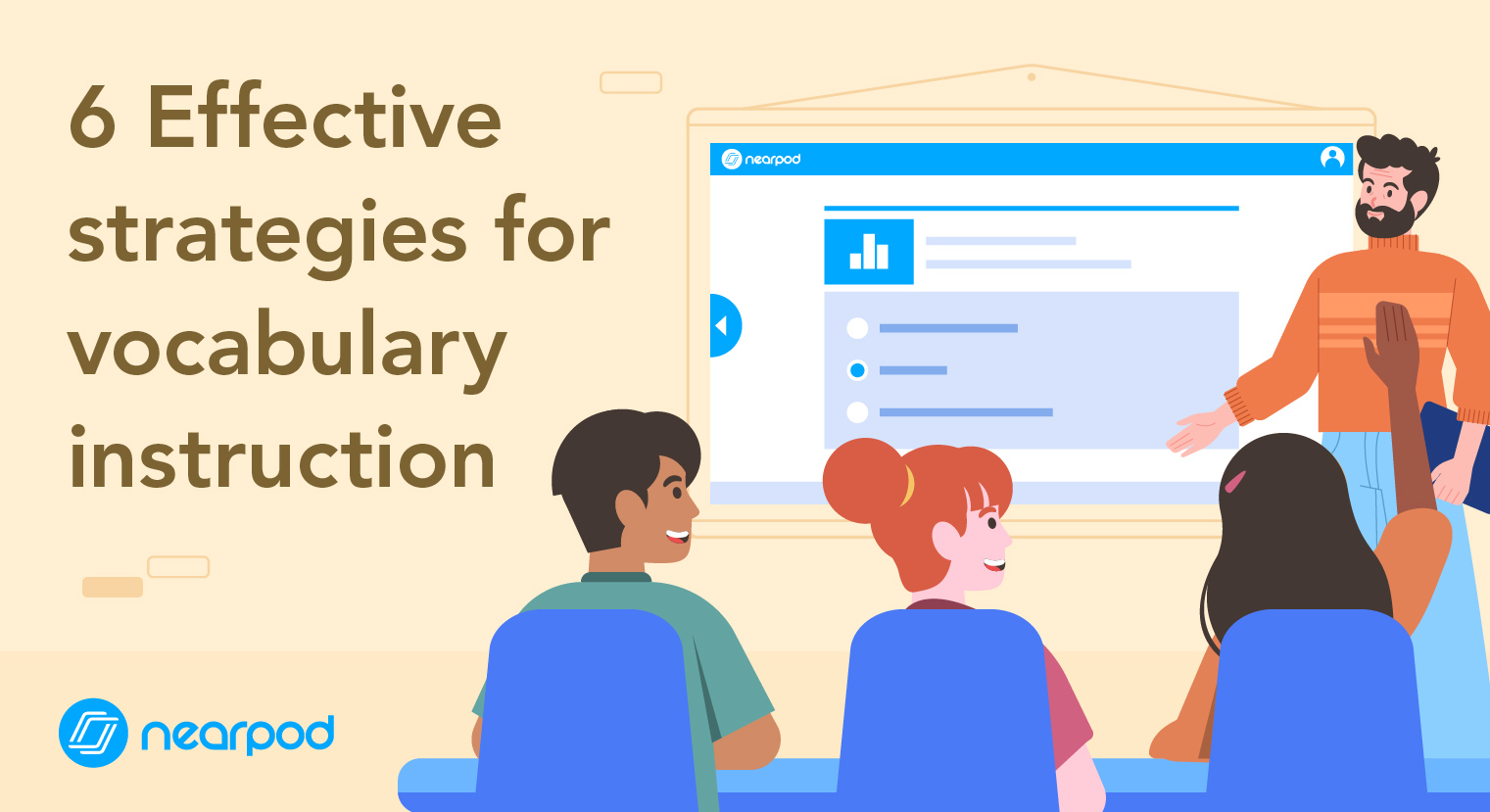
6 Effective vocabulary activities and strategies for teaching
Language is the foundation of everyday communication. Students can clearly communicate if they have a robust vocabulary, which is why teaching with effective vocabulary activities and strategies is so important. Learners can struggle to understand reading passages or math word problems if there are words they do not understand. If a text has unfamiliar words, students will likely focus on trying to understand those words rather than understanding the ideas in a text. Conversely, they may misinterpret the meaning altogether. In their writing, students must have a varied vocabulary to communicate ideas and make readers want to read their work.
Educators can increase students’ word knowledge through effective vocabulary activities. Teachers know their vocabulary instruction is effective when students apply words and their meanings in various contexts. Providing students with multiple representations of new vocabulary and opportunities for multimodal inputs and outputs will help students learn and remember vocabulary. They can also learn to discern the meaning of unfamiliar words independently.
6 Effective vocabulary activities and strategies for teaching
1. Explicitly teach vocabulary within content-rich instruction
Effective implementation of a vocabulary strategy begins with a well-planned lesson. Research suggests that direct instruction through instructional routines is more effective and efficient than allowing students to discover word meanings independently (Birsh, J. & Carreker, S., 2018). It takes repetition and frequent use for new vocabulary terms to “stick” and become a part of students’ everyday language and academic conversations.
Nearpod has ready-made core subject lessons (math, science, English and language arts, and social studies) explicitly teaching vocabulary terms. Education.com lessons also pre-teach vocabulary before content instruction.
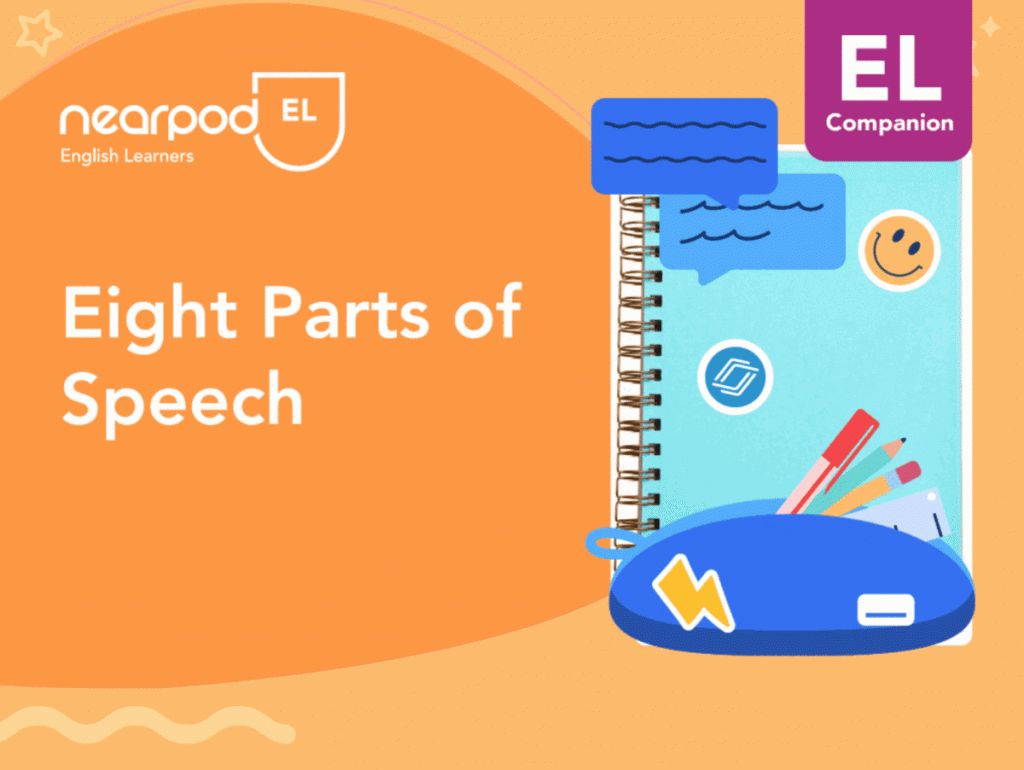
The Nearpod English Learners Program* provides teachers with the content, tools, and organization to create daily differentiated learning experiences that maximize language acquisition for all learners. While the lessons were written for students learning English, they are also helpful in general education classrooms. In the lessons, students learn content-specific information and vocabulary simultaneously! Students also use the new vocabulary in the same lesson, helping them remember the word’s significance and meaning.
*The Nearpod EL program is available to users with a Nearpod school/district account that can access the add-on lesson program.
2. Create a vocabulary and content-rich lesson with a few clicks
Don’t see a ready-made lesson on a topic you want to teach? That’s okay. You can use Nearpod’s Slide Editor to create your own vocabulary-specific slides and embed interactive vocabulary activities and assessments for students.
Here’s an example of a vocabulary instructional process you can follow in your teacher-created slides:
- Prepare your Nearpod lesson by adding a video with the word pronunciation as Reference Media in a Collaborate Board. You can embed a video from YouTube or upload your own video. You can also enable Immersive Reader for students to have them see the definition and other properties of the vocabulary word.
- Start your instruction by saying the new word aloud and having students repeat it. Have students type or record their answers on the Collaborate Board.
- Provide a student-friendly definition of the word. Insert images and example sentences into the slide. (Read more about student-friendly definitions in vocabulary activity #3!)
- During instruction, connect the word to other vocabulary terms students already know. Add a Matching Pairs activity to have students connect words to definitions.
- Ask students to use the word aloud and in their writing. Allow them to submit their responses on an Open-Ended Question or Collaborate Board.
3. Provide student-friendly definitions
The vocabulary strategy of using student-friendly definitions is essential for learners to understand new word meanings. Dictionary definitions can be hard for students to understand, and they do not always fully capture the word’s meaning. Additionally, there is often more than one definition. When improving vocabulary, multiple definitions can make it difficult for students to know which is correct given the context of the lesson or reading passage (Beck et al, 2013).
To write student-friendly definitions, use everyday language in the context of a relatable example. For example, take the word “commend.” Here’s how you can share student-friendly definitions:
If I “commend” a student, I give them compliments or praise because they probably did something that impressed me. The “praise” I give would be in public. An example sentence is, “I commended Eli for his efforts during the spelling bee.” The word “commend” implies that I praised Eli publicly for his work at the spelling bee. Can you think of something someone did that you would commend them for?
In this example:
- I introduced the word’s definition.
- I provided context and an example sentence.
- I asked students to use the word immediately after learning its meaning.
If the class is reading a book with the word “commend,” using a book excerpt to connect the student-friendly definition is another avenue you can pursue.
4. Use interactive videos in your vocabulary instruction
Along with providing a student-friendly definition, have students interact with the word in various ways. Students can better remember and understand new meanings by bringing in other modalities (Birsh, J. & Carreker, S., 2018). You can use videos and music to provide auditory and visual communication. Videos and songs can model how students can use newly learned language!
Nearpod Original (NPO) videos are helpful when teaching students about specific topics. Adding an NPO video to a lesson can add a multimodal dimension. Videos often show real-world representations and offer further examples of the word in context. To check students’ comprehension, you can add questions in the video. The video will pause at specific points and prompt a question to check students’ understanding and keep them engaged in the video lesson.

The Personification Nearpod Original perfectly explains the meaning of personification and provides context for the word, as seen in the two poems. Consider using Nearpod Original videos when vocabulary activities to teach your students.
If you want to use a video from YouTube, you can create your own Interactive Video by adding the video and your questions to the lesson. YouTube videos embed into Nearpod so students can watch a video about the water cycle or any other topic without navigating away from Nearpod or viewing pop-up ads.
5. Strategically choose which vocabulary words to teach in the classroom
There is only so much time in the day for instruction and student practice. When teachers decide to teach vocabulary explicitly, the terms should give students the biggest bang for their buck. Teachers can efficiently use instructional time by introducing academic vocabulary students frequently encounter in multiple subject areas (Beck et al, 2013; Birsh, J. & Carreker, S., 2018).
Teaching tier two words is one way to introduce new vocabulary strategically. Tier two words appear in multiple subjects and can sometimes have multiple meanings. This distinction is helpful for students to improve their vocabulary.
How to teach Tier 1, 2, and 3 vocabulary words
Understanding the tiers can help you choose which words to teach in your vocabulary activities. Students encounter tier-one words in everyday language. They will likely learn words such as “like,” “swim,” and “run” through hearing and participating in conversations. Tier two words appear in multiple domains and written text, making them high-utility words. Since students would not typically encounter them in conversation, they would benefit from explicit instruction of words like “contradict” or “maintain.” The most infrequent terms are tier-three words. These words are subject-specific words learners would infrequently use, such as “economy” or “counterclaim.” Keep in mind that even though general guidelines differentiate the different tiers, there is some overlap between the types of terms.
Nearpod EL’s academic vocabulary lesson series contains many tier-two words. The word “Energy” is an example of a tier two word.
Ask yourself these questions when selecting words for vocabulary activities:
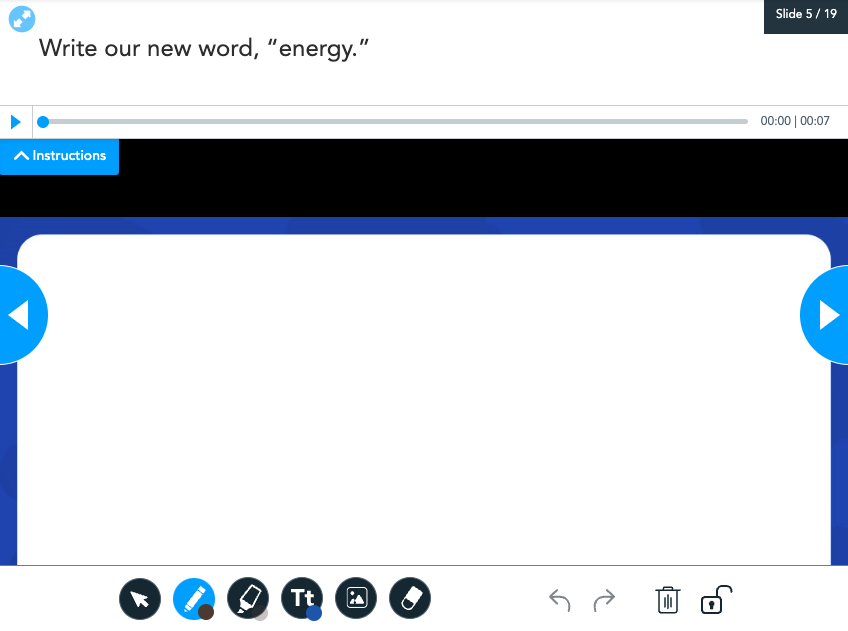
- Can students comprehend the process, reading passage, or concept even if they do not know this word? If they cannot meet any of those criteria, teach the word!
- Will learners encounter this word in other subjects or later grade levels? If they meet one of those criteria, teach the word!
- Can learners make connections between the new words and words they already know? The term may be worthy of a direct instruction moment if the answer is yes.
After instruction, practice newly-acquired words in a competitive, fun way with a Time to Climb! The gamified activity allows for photos or text as the answer option.
6. Get students involved in choosing the vocabulary words they want to learn
Let students select fascinating words for a book the class reads aloud or from their independent reading time. If there is no time to teach student-chosen words, encourage them to learn the new words. Then they can teach the class the word through a vocabulary presentation!
For their vocabulary presentation, students can use a Draw It interactive activity in Nearpod to draw a picture or create a diagram. As they present the new word, they can reference the drawing.
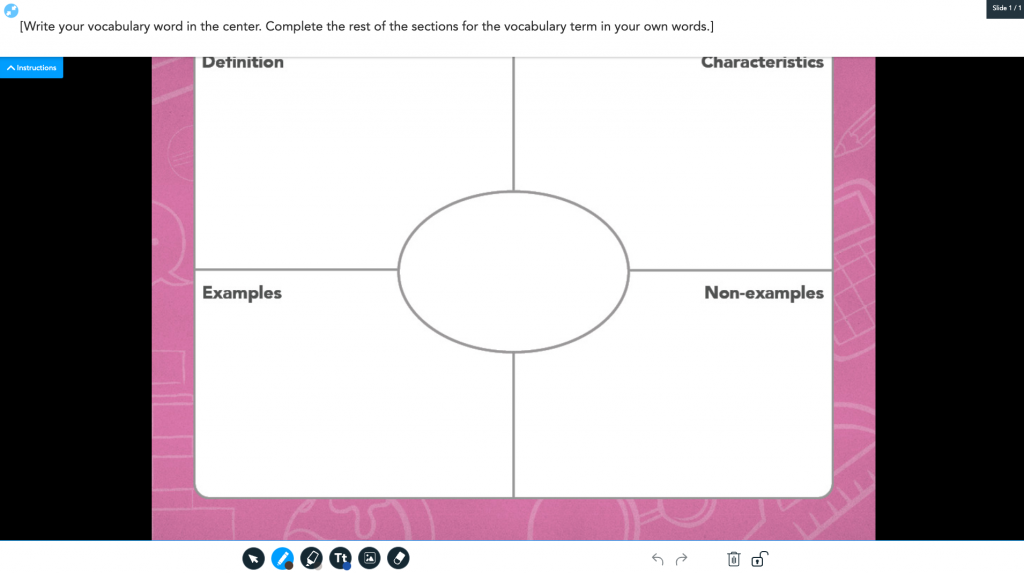
The presentation will help the presenter remember the word, and the audience may learn a new word too! Using a simple Frayer Model Draw It template to share the word is one vocabulary-sharing visual presenters can use. Frayer Models bring in the multimodal aspect of communicating through drawing and writing.
Use these vocabulary activities in your classroom
This list of vocabulary strategies is by no means comprehensive. There are many more effective strategies available to improve vocabulary retention. Choose the method that will meet your students’ needs and time constraints. This list can inspire some ideas and show you how easy it is to implement vocabulary activities with Nearpod.
With Nearpod, you can create interactive lessons and activities in one place. You can also use our premade standards-aligned resources across all subjects and grade levels. Sign up for free now to use these tips and explore the power of Nearpod!
Interested in reading more about this topic? Check out this blog post: 6 tips for teaching reading and writing skills in any classroom
References and Further Reading
Beck, I. L., McKeown, M. G., Kucan, L., McKeown, M. G., & Kucan, L. (2013a). Bringing words to life: Robust vocabulary instruction (2nd ed). The Guilford Press.
Birsh, J. R., & Carreker, S. (Eds.). (2018). Multisensory teaching of basic language skills (Fourth Edition). Paul H. Brookes Publishing Company.
Report of the National Reading Panel: Teaching Children to Read. (n.d.). ww.Nichd.Nih.Gov/. Retrieved September 22, 2022, from www.nichd.nih.gov/publications/pubs/nrp/smallbook
Wexler, N. (2019). The knowledge gap: The hidden cause of America’s broken education system–and how to fix it. Avery, an imprint of Penguin Randon House, LLC.

Jennifer is a forever educator with over 10 years of experience in education. Her mission is to create research-informed educational experiences that engage students and inspire learning.
